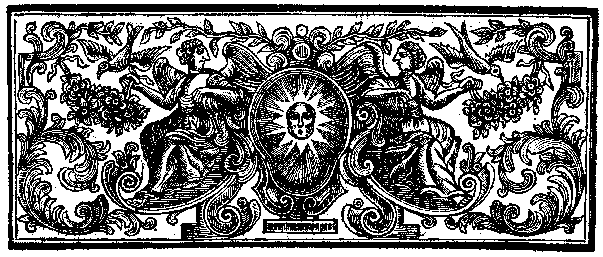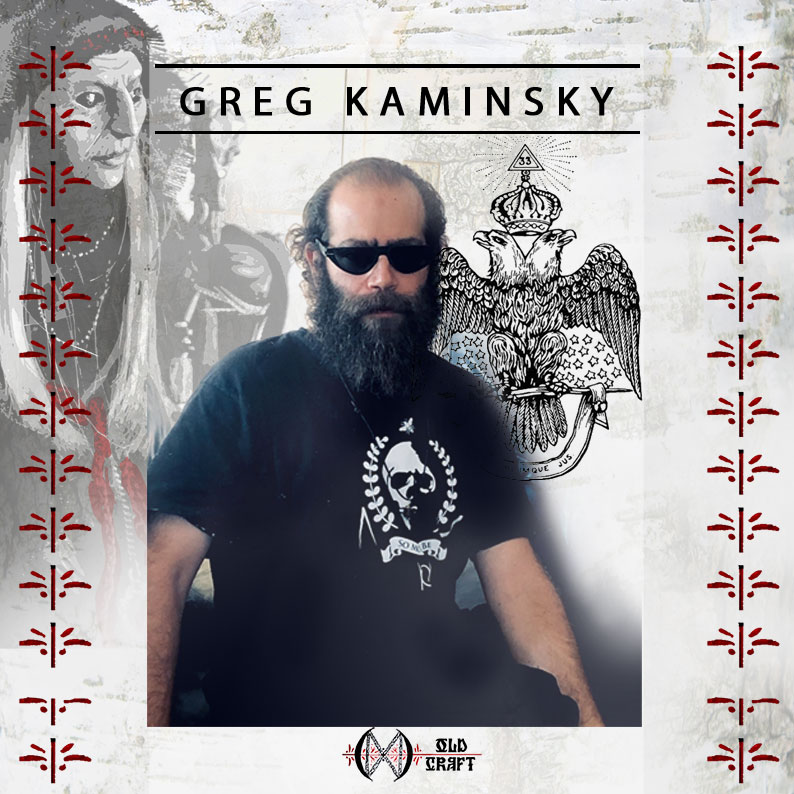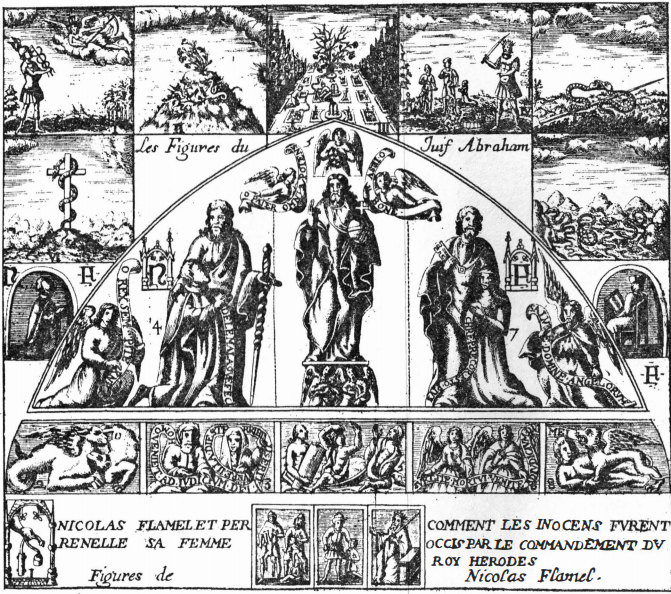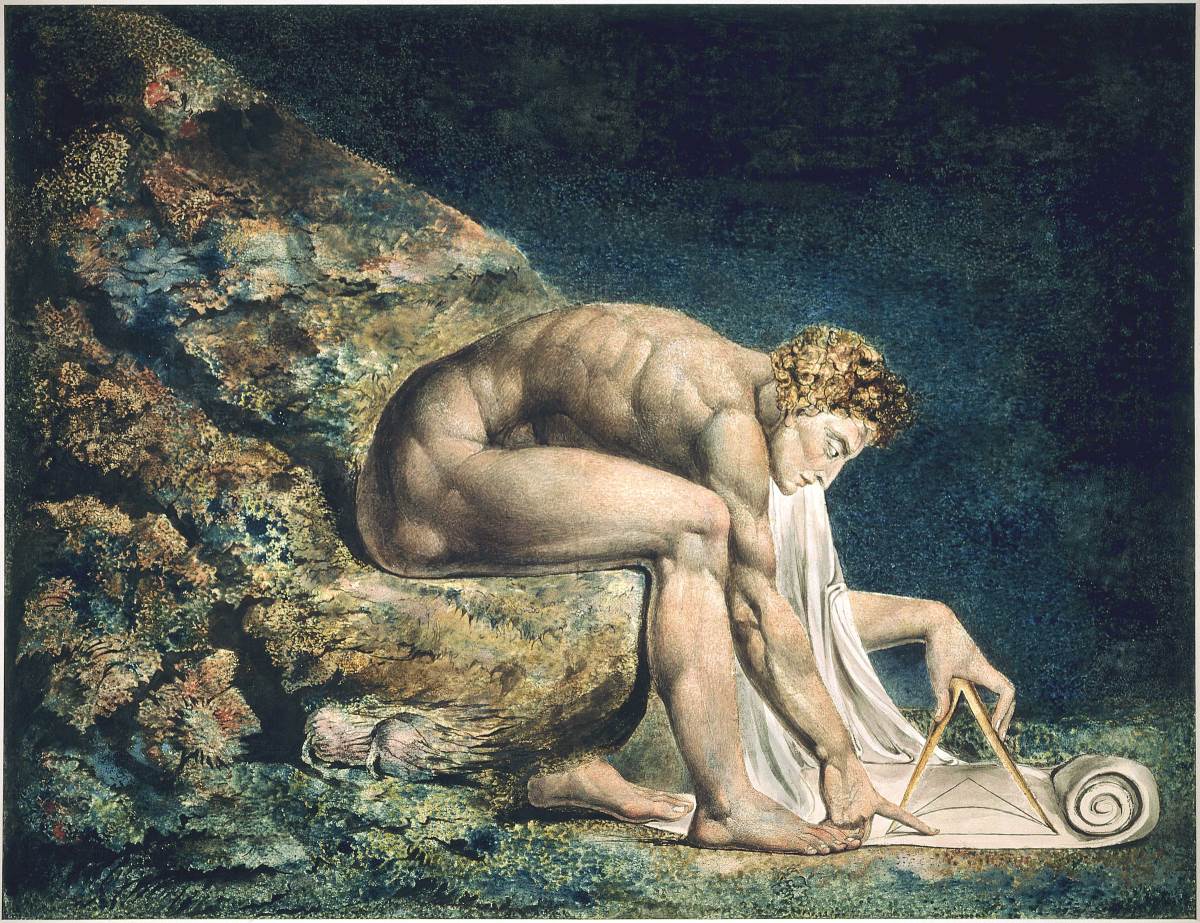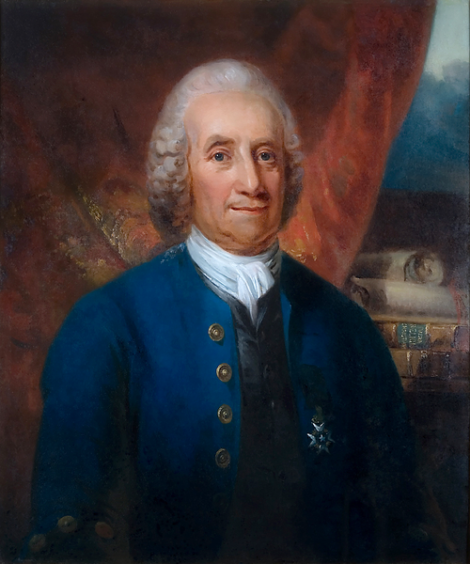
Portrait of Emanuel Swedenborg by Carl Frederik von Breda; made sometime before 1818. Swedenborg was considered mad, but brilliant by many, especially for his common-sense view that God is Divine Goodness who is neither vindictive nor in need of Christ’s atonement for Adam’s sin. Kant disregarded him publically as a »Spirit-Seer«, but privately is said to have held him in high esteem (Herder).
Stories of psychic powers, visions, and predictions were prevalent in the 18th century. But not many of them are backed up by facts and solid accounts. However, there are a few stories that cannot be easily dismissed. The following is one such story.
In 1759 on the 19th of July a devastating fire broke out in Stockholm, Sweden. The well-documented event describes the fire spreading rapidly and destroying nearly 300 homes in its path. About 400 km away from Stockholm, in Gothenburg, Swedenborg was having dinner with his friends. At about 6 o’clock, he became visibly anxious and confessed to his friends that a fire broke out in Stockholm which threatened to burn down his home.
At 8 o’clock he was relieved, saying that the fire had stopped just three doors away from his home. Word of Swedenborg’s strange claims reached the provincial governor who that same night summoned Swedenborg to recount his story in detail. Three days later, the couriers from Stockholm reached Gothenburg with the news of the fire, validating Swedenborg’s story down to the precise hours when the fire had started and when it had stopped.
Emanuel Swedenborg, one of the most brilliant, complex, and well-rounded historical figures of the 18th century was a mystic who constantly experienced visions and strange dreams since the spiritual world opened itself to him.
While he is primarily known for his philosophy and theology, Swedenborg was a polymath whose areas of study and expertise included mathematics, geology, metallurgy, mineralogy, crystallography, anatomy, chemistry, physics, cosmology, and more. And although in many regards he was a scientist ahead of his time, his life and spiritual awakening established Swedenborgism as the foundation of the New Church and as an important influence on Spiritualism and Theosophy.
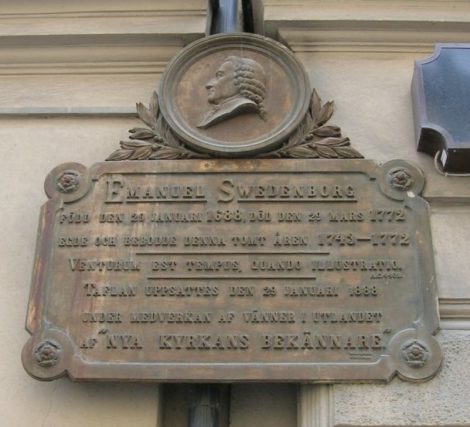
Swedenborg’s place of birth is commemorated at Hornsgatan 43, in Stockholm, Sweden. Photo: Creative Commons.
Swedenborg’s Life and Spiritual Awakening
Emanuel Swedenborg (Swedberg) was born on January 29, 1688 in Stockholm, Sweden, as the son of Jesper Swedborg, the bishop of Skara in Sweden. He is one the most notable churchmen in Swedish history. He received a noble honor from Queen Ulrika Eleonora after King Charles XII’s death which changed the family name from Swedborg to Swedenborg. Jesper is famous for his criticism of the Lutheran Church in Sweden and his naive form of Christian belief that he had since childhood which influenced his son’s spirituality. More notably, Jesper’s belief in angels and spirits greatly impacted Emanuel’s spiritual vision.
After graduating from the Uppsala University in 1709, Emanuel Swedenborg traveled through the Netherlands, France, Germany, and he made his way to London, England. He lived there for the next 4 years. Because London was a central location for science at the time, Emanuel developed an interest in physics and mechanics, alongside his interest in philosophy and poetry.
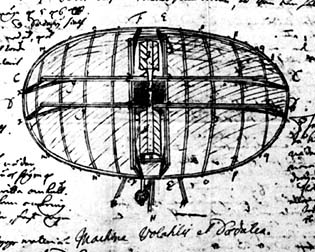
Sketch of Swedenborg’s Flying Machine from his notebook. He first sketched the Flying Machine when he was just 26 years old and later published it in his Daedalus Hyperboreus in 1716
Over the course of only 2 years, Swedenborg went on to develop engineering projects such as the »Lost Draft Invention of a Submersible Ship” in 1714 and the »Flying Machine” in 1716, that he started sketching a few years earlier.
Because of his reputation as a scientist, he was offered a chair of mathematics at the University of Uppsala in 1724, which he refused saying that his main interests were geometry, chemistry, and metallurgy and that because of his stutter he did not have »the gift of eloquent speech” worthy of a professor or public speaker.
However, what he did not speak, he wrote. According to Swedish critic Olof Lagerkrantz, Swedenborg’s extensive argumentation in writing is due to his speech impediment. Considering that he published 14,000 pages and that he left behind 28,000 pages in manuscript form, this may very well be one of the true aspects behind his written work.
In the 1730s, Swedenborg began his studies of physiology and anatomy, having developed significant prescient ideas that anticipated the modern scientific discoveries about the nervous system, neurons, the cerebral cortex, the function of the pituitary gland, and more. It was around this time that he also began to study in depth the relationship between spirit and matter. He developed his own philosophical method which consisted of experience, geometry, and the power of reason after his attempt to understand the order and reason of creation.
While there is an underlying sense of this in his »Opera philosophica et mineralis”, a work of 3 volumes published in 1735 in Leipzig that conjoined philosophy and metallurgy, the first manuscript to really touch on the spiritual aspect of the relationship between spirit and matter was his »De Infinito” published the same year. In it, he explains his vision of the finite-infinite relation and proposed that the soul is based on material substances.
In 1743, he made plans to travel abroad in order to gather research for his Regnum Animale, in which he wanted to explain the anatomy of the soul in no less than 17 volumes. In 1744, Swedenborg was in the Netherlands where he began to have distinctive dreams which he wrote down in his Journal of Dreams, which was published in 1859, after being discovered at the Royal Library in the 1850s. These distinctive dreams continued for about 6 months and followed him to London, where he traveled after leaving the Netherlands.
The last entry of the journal dated 26–27 October 1744, depicts Swedenborg’s conclusion that he must follow a new path and abandon his Regnum Animale project. Soon after that, he started a new project that he did not complete, but still published in 1745, titled »De cultu et amore Dei”.
The same year he claimed to have entered a spiritual state and experience a spiritual awakening, although the spiritual world opened to him before, on April 6, 1744, during Easter Weekend, when he claimed that God enabled him to visit heaven and hell at will and that he had a revelation that he was chosen to write the Heavenly Doctrine with which he would reform Christianity.
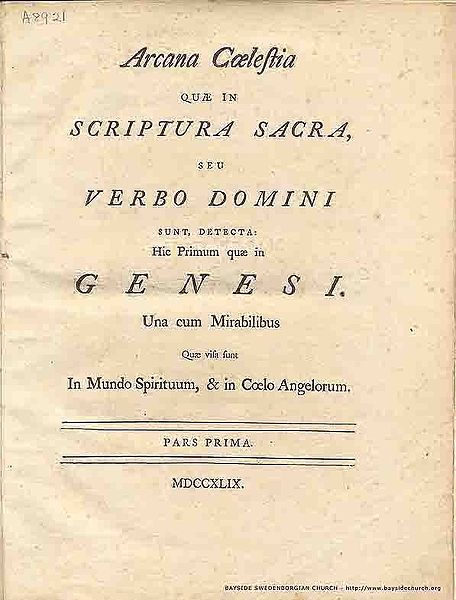
Title page from the first edition of Arcana Coelestia from 1749. The book revolutionized the way the Bible verses were understood at the time. Swedenborg’s interpretation gave spiritual meaning to many who couldn’t understand the word of the Scriptures
Thus, Swedenborg spent the last 28 years of his life investigating, experiencing, and writing on spiritual matters. In June of 1747, he resigned from his professional duties to fully dedicate himself to completing a new project he began. He began studying Hebrew and intended to make a spiritual interpretation of every verse of the Bible. This project which lasted for 10 years since 1746 is considered by many his magnum opus and it is known as »Arcana Cœlestia”. The work was published in 8 volumes in between 1479 and 1756, at first anonymously, until Swedenborg was identified as its author in the 1750s.
“Arcana Cœlestia” provides an exposition of the spiritual meaning of the contents of the biblical books of Genesis and Exodus, without dismissing the historic validity of the events described in said books. However, he describes these events and their meaning as spiritual symbols. Swedenborg states the following in the opening paragraph of the first volume of »Arcana Cœlestia”:
“From the mere letter of the Word of the Old Testament no one would ever discern the fact that this part of the Word contains deep secrets of heaven, and that everything within it both in general and in particular bears reference to the Lord, to His heaven, to the church, to religious belief, and to all things connected therewith; for from the letter or sense of the letter all that anyone can see is that ̶ to speak generally ̶ everything therein has reference merely to the external rites and ordinances of the Jewish Church. Yet the truth is that everywhere in that Word there are internal things which never appear at all in the external things except a very few which the Lord revealed and explained to the Apostles; such as that the sacrifices signify the Lord; that the land of Canaan and Jerusalem signify heaven ̶ on which account they are called the Heavenly Canaan and Jerusalem ̶ and that Paradise has a similar signification. »
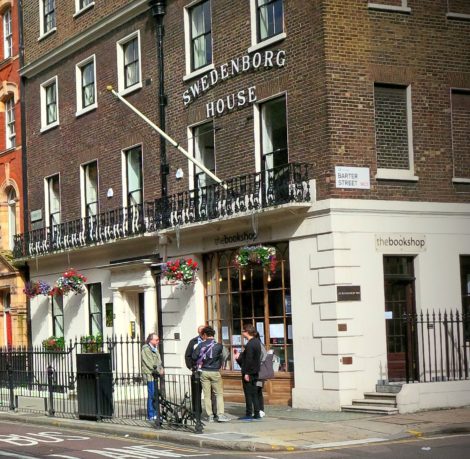
The Swedenborg House in London. Even though, London is the city were Swedenborg would die, aged 84, this house is the Headquarter of the Swedenborg Society, which was founded later, in 1810. The society resides there since 1925 . Creative commons.
After his »Arcana Cœlestia”, which many believe is the foundation of his theological works, Swedenborg published around 18 other theological works, such as »The Last Judgement” from 1578 in which he claims that he witnessed the event named in the very title and that it took place in between 1757 and 1758. He claimed that the judgement took place »halfway between heaven and hell”, in a spiritual plane, and that it occurred because the Church had become faithless and corrupted, thus threatening the balance between heaven and hell.
However, Swedenborg’s most popular book to this day is »Heaven and Hell” published in 1578, which describes his vision of the afterlife and even the process of dying. He sees death as a peaceful transition into a spiritual realm where people are met by angels and he describes the realm as a world more real than the physical one. Furthermore, his vision of heaven is a »geography of love”, where people are distributed according to what they love most and in which people can be their best version of themselves. He also gives an elaborate depiction of angels and divine worship.
Swedenborg completed his last book, »Vera Christiana Religio« at the age of 82 in July 1770 in Amsterdam and he published it in 1771. Later that summer he traveled to London and just before Christmas that year he suffered a stroke that left him bedridden, having partially paralyzed him. He died on 29 March 1772 in London, aged 84. Probably the most interesting about his death is that he accurately predicted it. He told his landlord’s servant, Elizabeth Reynolds, of his time of death and that he was not only at peace with it, but happy about it.
And if the account of a servant girl isn’t enough, there is also written evidence. Swedenborg corresponded in February of that year with the founder of Methodism, John Wesley, who wrote to him that he was embarking on a journey of 6 months and that upon his return he would contact Swedenborg again. Swedenborg replied that it’ll be too late because he was going to make his final journey to the spiritual world on March 29.
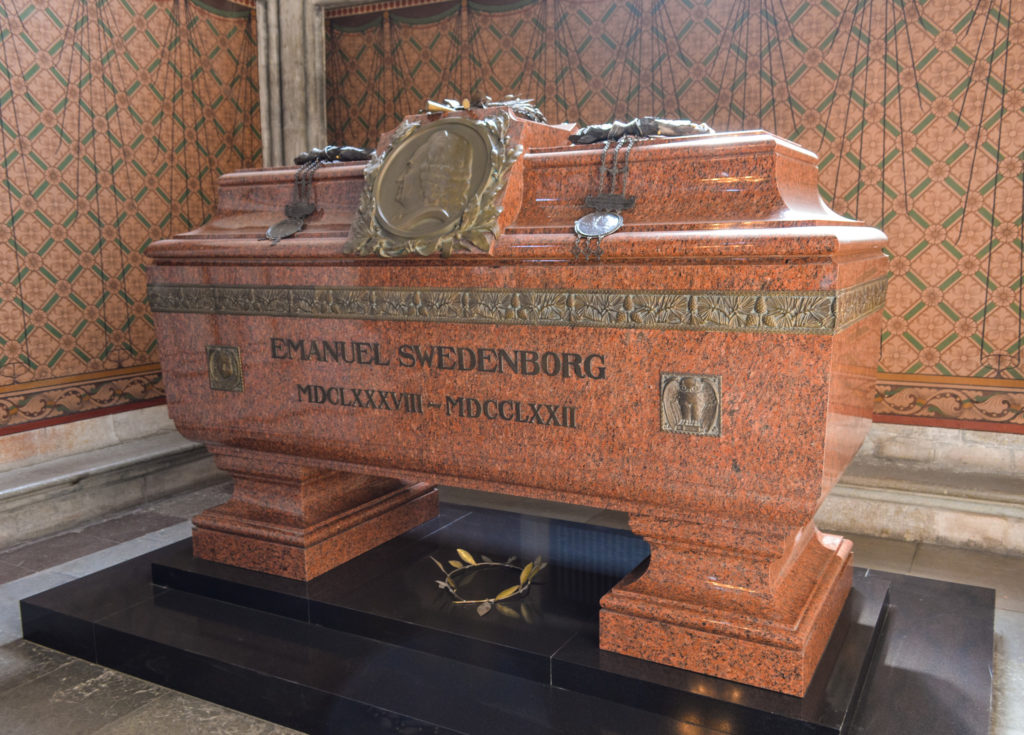
Emanuel Swedenborg’s Tomb in the Uppsala Cathedral, Sweden. Foto: Francisco Anzola, CC.
According to his friend and landlord, Pastor Arvid Ferelius of the Swedish Church in London, when he asked Swedenborg if he would like to recant anything in his final hours before death, Swedenborg raised himself up, put a hand on his heart and said: »As truly as you see me before your eyes, so true is everything that I have written; and I could have said more had it been permitted. When you enter eternity you will see everything, and then you and I shall have much to talk about«.
Swedenborg And Swedenborgism As Influence on the Occult
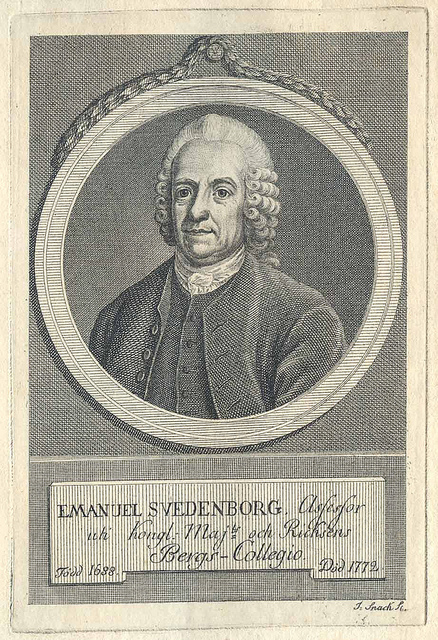
Swedenborg’s vision of the afterlife made him a favorite among many enthusiast occultists during the occult revival. His optimistic view resonated with the spirits of many who found comfort in imagining a heaven for all. Image: Flickr, CC.
Swedenborg’s teachings became popular with the enthusiasts of the Occult Revival in the 19th century. For occultists, Swedenborg was a visionary whose doctrine of correspondences was just in line with the theosophical tradition of alchemist Paracelsus or the mystic Jakob Böhme, and who like John Dee, the occult philosopher and astrologer before him, communed with angels and imparted his belief to people based on his own personal experiences with the spirit world.
And even though philosopher Kant publically slammed Swedenborg’s visions (after an initial phase of interest and admiration) quite unflattering as »dreams of a spirit-seer«, Swedenborg had the enormous advantage of being not only well versed but innovative and commonly accepted in the science of his times. According to Herder, even Kant never lost his respect for Swedenborg, and overall, the story of the bishop’s son who went out to become a scientist and ended a mystic is just convenient for the weakened self-confidence of Western Esotericism since the Age of Reason.
While magicians like Eliphas Levi and spiritists like Sir Arthur Conan Doyle revere him as an occultist, Swedenborg never held himself as one nor is there any solid proof that he could’ve been one. The common and decided interest in the supernatural at the time shared by the enthusiasts of the Occult Revival viewed Swedenborgism as a refreshing philosophy that served their practice of and belief in the occult with all the meanings the word »occult” may convey.
Alchemist and hermetician Dom Pernety (1716-1801) was a personal friend of Swedenborg and translator of the Seer’s Latin work »Heaven and Hell« into French. The Berlin circle around Pernety had personal contacts to Swedenborg, the French Martinist and leading member of Pernety’s »hermetique rite« and »Illumines d’Avignon« Benedict Chastanier was one of the first »Swedenborgians« to spread the Seer’s gospel into England’s masonry.
The »Swedenborgian Rite«, sometimes attributed to a »Marquis de Thorn«, sometimes to a »Marquise de Thome«, consisted of 6 degrees (Apprentice, Fellow Craft, Master Neophyte, Illuminated Theosophite, Blue Brother, and Red Brother) and was built on top of the »hermetique rite« as practiced in circles around the »Illumines d’Avignon«, enriched with Swedenborg teachings. While the Masonic »Swedenborgian Rite« was at first short-lived in England, several Swedenborgian Churches started to spread. The »Swedenborgian Rite« made it’s way into American Masonry, though and from there found it’s way back to England at the end of the 19th century.
However, these seem to be the only noteworthy connections between Swedenborg and Freemasonry and unlike suggested by Dr. Marsha Schuchard, historian of esoteric culture, there is no real proof that Swedenborg was a fringe freemason or that he was even remotely involved with Masonic rites, orders, or lodges.
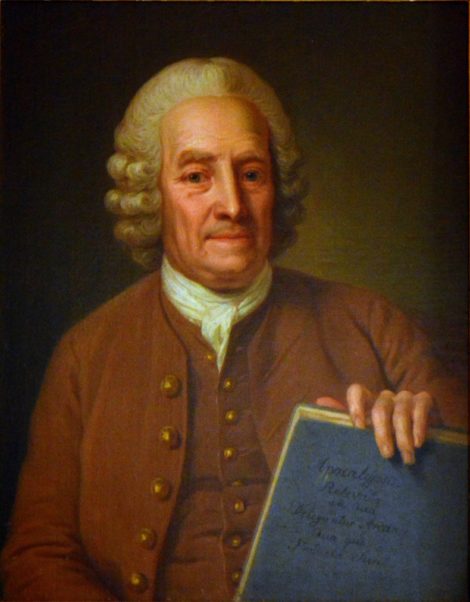
Emanuel Swedenborg with a print of »Apocalypsis Revelata«. (»The Apocalypse Revealed«). Painting by Per Krafft the Elder, about 1766.
Although Swedenborg never founded a church, a cult, or an order, his teachings and theology influenced many who after his death gathered in small study groups to read and discuss his work. His Heavenly Doctrine was appealing especially to those who felt that Christianity at the time needed to be reformed through a more optimistic and comprehensive vision. Swedenborg’s reputation as a seer, his vision and experience of the spiritual realm, his accounts of talking to angels, and his belief in a heaven of divine love for all, became the fundamental belief of the New Church of Jerusalem, founded on May 7, 1787 in England.
The New Church’s belief is that Swedenborg was truly chosen by God to write down his Heavenly Doctrine. Their fundamental Swedenborgian belief is that God, infinite and loving, is at the center of life, that the Bible contains deeper spiritual meaning for the soul, that those who pass become angels or spirits, and that heaven is dictated by state of being and what one loves most.
One of Swedenborg’s earliest readers was poet and artist William Blake, whose own visions of the spiritual world are revered to this day. He is known to have attended with his wife the first conference of the New Church, which was then still in its embryonic phase. Romantic Blake (who also had a deep antipathy against the alchemist Isaac Newton, which he perceived as »sterile«) was attracted to Swedenborg’s vision of divine love, but he was repelled by the doctrine of the church. His satire »The Marriage of Heaven and Hell« from 1790-1793 was deeply influenced by his rejection of Swedenborgism.
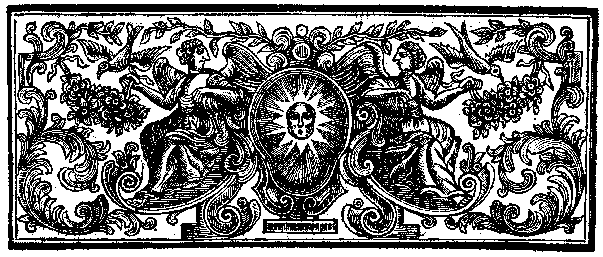
Ornament from Arcana Coelestia depicting two angels close to the Sun. Angels are central to Swedenborg’s theology and about them he said: “Angels never attack, as infernal spirits do. Angels only ward off and defend.”
During the Occult Revival, when followers of Swedenborgism blended the mystical aspects of Swedenborg’s work with divination, spiritism, alchemy, and theosophy, »Heaven and Hell«, Swedenborg’s most popular book, became a favorite among those in the Spiritualist movement who were particularly interested in the afterlife and communion with the spirit world. Sir Arthur Conan Doyle even wrote in the first volume of his »The History of Spiritualism« from 1926 that: »In point of fact, every Spiritualist should honor Swedenborg, and his bust should be in every Spiritualist temple, as being the first and greatest of modern mediums«.
The association with Spiritualism was opposed by some Swedenborgian groups stating that the practice of spiritualism may be dangerous and against Swedenborg’s recommendations, while others sided with the Spiritualist movement and embraced the practice. While Swedenborg himself was open and candid about his spiritual experiences, visions, and communion with angels and spirits, he did warn against making contact with the spirit world, as it may open the door to evil and unwanted spirits.
He believed that the ability to communicate with the spirit world must be given as a gift from God and not a skill that should be developed. However, Swedenborgian spiritists dismiss these warnings and continue to credit Swedenborg as one of the first modern mediums. Swedenborg’s visionary experiences of the spirit world were revelations, which made them either inherent or god-given, but they were not actively sought.
Eliphas Levi commented on this with the following words in his »The History of Magic« from 1859: »The means proposed indirectly by Swedenborg for communication with the supernatural world constitute an intermediate state allied to dream, ecstasy and catalepsy. The illuminated Swede affirmed the possibility of such a state, without furnishing any intimation as to the practices necessary for its attainment«.
Because of Swedenborg’s growing popularity with spiritists and enthusiast occultists, his teaching appealed to the Theosophical Society. Helena Blavatsky, the occult philosopher and occultists who co-founded the Theosophical Society in 1875, was well-read in Swedenborg she cites him in her book »Isis Unveiled« from 1877.
»It is a belief (founded on knowledge) among the kabalists, that no more than the Hermetic rolls are the genuine sacred books of the seventy-two elders – books which contained the ‘Ancient Word’ – lost, but that they have all been preserved from the remotest times among secret communities. Emanuel Swedenborg says as much, and his words are based, he says, on the information he had from certain spirits, who assured him that ‘they performed their worship according to this Ancient Word’. ‘Seek for it in China,’ adds the great seer, ‘peradventure you may find it in Great Tartary’!«
She considered Swedenborg »the greatest among the modern seers« and often cited him to serve her own agenda, but she also expresses criticism over his inability to remove himself from his »ingrained Christian theology« which limited his vision. She also criticizes the fact that Swedenborg was couldn’t tell the difference between his spiritual visions and his vivid imagination because he was an untrained medium and that his visionary experiences took place only in the astral plane only and never exceeded to higher spiritual planes. She most notably does so in her »Theosophical Glossary« from 1892:
»His clairvoyant powers, however, were very remarkable; but they did not go beyond this plane of matter; all that he says of subjective worlds and spiritual beings is evidently far more the outcome of his exuberant fancy, than of his spiritual insight. He left behind him numerous works, which are sadly misinterpreted by his followers«
Madame Blavatsky was not the first nor the last to suggest that Swedenborg might’ve had a vivid imagination. While she doesn’t see it as something pathological, many believe that he must’ve suffered from a mental illness, given the nature and content of his visions. Whether or not there might’ve been a drop of madness in the man’s brilliant mind is irrelevant at this point. His coherent and extensive work couldn’t have come from someone who was completely divorced from reason.
Ultimately, Swedenborg’s name, despite no direct connection to occultism or the occult revival, was taken as an epitome of Spiritualism and served many of the hopes, dreams, and even schemes of the enthusiast occultists from the 19th century. But for a distinct few, Swedenborg was the object of a passionate love and hate relationship.
One of these distinct few is one of Swedenborg’s earliest readers. Poet and artist William Blake, whose own visions of the spiritual world are revered to this day, although considered mad by many, he has a brilliant mind and intense spiritual experiences. He is known to have attended with his wife the first conference of the New Church, which was then still in its embryonic phase.
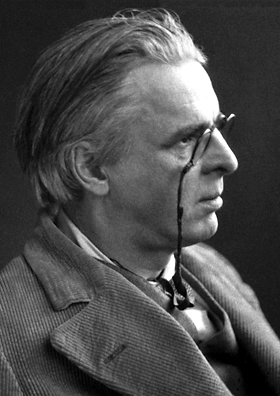
Golden Dawn member and magician William Butler Yeats (image: about 1923, Anonymous) confirmed his respect for Swedenborg on the occasion in his Nobel Prize Banquet speech.
Romantic Blake (who also had a deep antipathy against the alchemist Isaac Newton, which he perceived as »sterile«) was attracted to Swedenborg’s vision of divine love, but he was repelled by the doctrine of the church. His satire »The Marriage of Heaven and Hell« from 1790-1793 was deeply influenced by his rejection of Swedenborgism.
Blake’s admirer and Golden-Dawn member William Butler Yeats touches on this symbolic relationship between Blake and Swedenborg, while also crediting the Swedish mystic for his own charm which had drawn Yeats to him in his speech at the Nobel Banquet at Grand Hôtel, Stockholm which he held in December 10, 1923:
»I have been all my working life indebted to the Scandinavian nation. When I was a very young man, I spent several years writing in collaboration with a friend the first interpretation of the philosophy of the English poet Blake. Blake was first a disciple of your great Swedenborg and then in violent revolt and then half in revolt, half in discipleship. My friend and I were constantly driven to Swedenborg for an interpretation of some obscure passage, for Blake is always in his mystical writings extravagant, paradoxical, obscure. Yet he has had upon the last forty years of English imaginative thought the influence which Coleridge had upon the preceding forty; and he is always in his poetry, often in his theories of painting, the interpreter or the antagonist of Swedenborg. Of recent years I have gone to Swedenborg for his own sake, and when I received your invitation to Stockholm, it was to his biography that I went for information«. Source: Nobelprize.org

www.Nettlesgarden.com – The Old Craft


